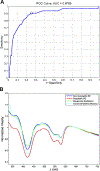Advanced endoscopic imaging for detecting and guiding therapy of early neoplasias of the esophagus
- PMID: 33184872
- PMCID: PMC7780427
- DOI: 10.1111/nyas.14523
Advanced endoscopic imaging for detecting and guiding therapy of early neoplasias of the esophagus
Abstract
Esophageal cancers, largely adenocarcinoma in Western countries and squamous cell cancer in Asia, present a significant burden of disease and remain one of the most lethal of cancers. Key to improving survival is the development and adoption of new imaging modalities to identify early neoplastic lesions, which may be small, multifocal, subsurface, and difficult to detect by standard endoscopy. Such advanced imaging is particularly relevant with the emergence of ablative techniques that often require multiple endoscopic sessions and may be complicated by bleeding, pain, strictures, and recurrences. Assessing the specific location, depth of involvement, and features correlated with neoplastic progression or incomplete treatment may optimize treatments. While not comprehensive of all endoscopic imaging modalities, we review here some of the recent advances in endoscopic luminal imaging, particularly with surface contrast enhancement using virtual chromoendoscopy, highly magnified subsurface imaging with confocal endomicroscopy, optical coherence tomography, elastic scattering spectroscopy, angle-resolved low-coherence interferometry, and light scattering spectroscopy. While there is no single ideal imaging modality, various multimodal instruments are also being investigated. The future of combining computer-aided assessments, molecular markers, and improved imaging technologies to help localize and ablate early neoplastic lesions shed hope for improved disease outcome.
Keywords: Barrett's esophagus; computer-aided diagnosis; confocal laser endomicroscopy; esophageal cancer; narrowband imaging; optical coherence tomography.
Published 2020. This article is a U.S. government work and is in the public domain in the USA.
Conflict of interest statement
Competing interests:
The authors declare no competing interests.
Figures





References
Publication types
MeSH terms
Supplementary concepts
Grants and funding
LinkOut - more resources
Full Text Sources
Medical

